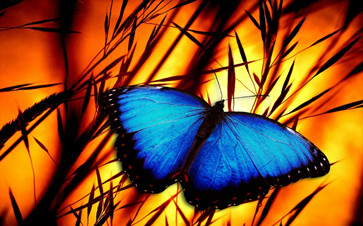New Color Printing Technique Inspired by Butterflies
Time:2017-11-16 From:

Have you already seen a Morpho butterfly? The sparkling blue of its wings are quite impressive, aren’t they? The mechanism behind this also makes peacock plumage such intense and might soon revolutionize the industry thanks to a new color printing technique invented by Danish scientists.
Xiaolong Zhu and his co-workers from the Technology University of Denmark came up with a special method aiming to mass-produce what are known as structural colors. This means that the colors are produced by shapes absorbing and reflecting specific light wavelengths.

New Color Printing Technique: A Color That Does Not Fade and Prevents Fraud
It also allows for constructing more durable color images as – in contrast to pigments or dyes – structural colors do not fade. Another benefit is that the technology provides a high resolution of 127,000 dots per inch. This makes it possible to print security patterns or watermarks, invisible to the naked eye, on passports or banknotes to prevent counterfeiting.
In order to ensure these features the researchers laid Germanium over plastic pillars:
“To paint the surface of objects like credit cards, pens or cars, first, we create nanoscopic pillars of plastic, which are only 60 nanometers thick – 1,500 times thinner than a human hair. Then, we coat it with a semiconductor called Germanium. Finally, a pulse of laser light melts the Germanium just enough to modify its shape and produce the desired color”,
team member Anders Kristensen describes the process.
Nature Serving as a Model for the New Color Printing Technique
Until now the printer cannot be released because the scientists still need to fix a major issue: In fact, it is not possible to produce green light in this way so far. But as soon as they overcome this hurdle, there is huge potential for the technique:
“Its main application would be mass customization. People would buy the exact same car but the color palette of interior elements could be changed simply by firing lasers at it.”
News Source:Blog drupa
Written By drupa Redaktion

